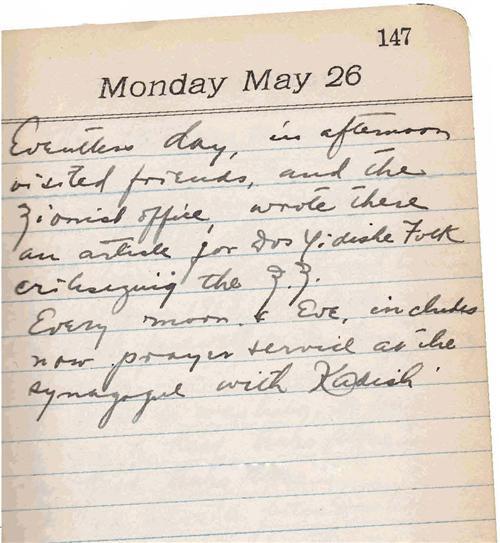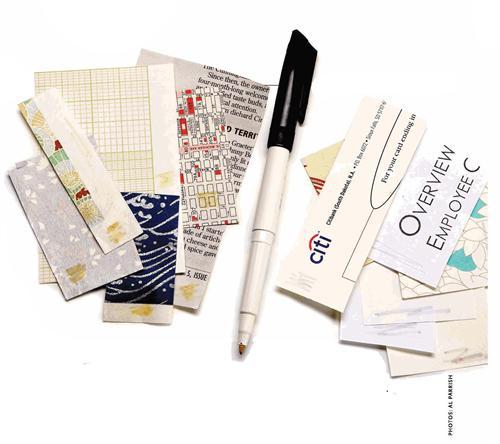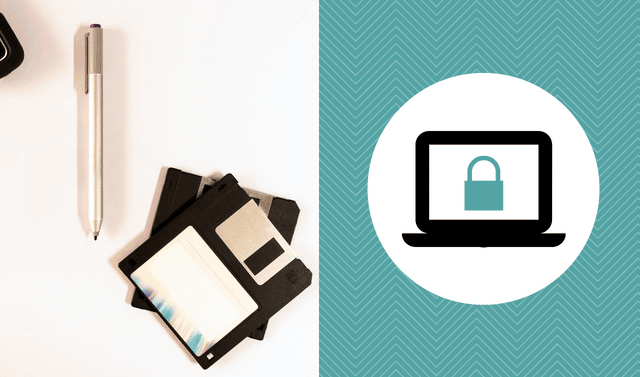Sign up for the Family Tree Newsletter Plus, you’ll receive our 10 Essential Genealogy Research Forms PDF as a special thank you!
Get Your Free Genealogy Forms
"*" indicates required fields
Safe Keeping: old diaries
An ancestor’s diary can unlock many mysteries about your family’s past — but do you need to keep it under lock and key to ensure it lasts for future generations? Follow these preservation tips to enhance the longevity of your relative’s(or your own) journal.
As with any important papers, keep your ancestors’ journals in a cool, dry area, away from radiators and outside walls. Shelving your books vertically between bookends supports the binding best. If the covers or pages are loose, tie the book with white cotton twill tape to help keep it together. Position the knot across the edge of the book opposite the spine. If the diary’s spine is broken or the covers are falling off, protect it in a snug acid-free storage box. Get one from the suppliers listed in the box at right or, if the diary’s an odd size, make your own using instructions at <www.familytreemagazine.com/bookbox>.
When dusting, always hold the covers tightly shut to make sure your cleaning doesn’t force dirt between the pages. Use a soft cloth to clean the covers, but don’t rub down paper — it will only grind in the dirt. Instead, use a soft brush made for cleaning photographs, and dust lightly, starting in the center of the page and working your way out.
Luckily, old paper is much more stable than modern sheets. Early paper was made from cotton and linen rags, whereas modern papers are often made from wood pulp, which causes higher acidity and a shorter lifespan. Carefully remove metal fasteners and paper clips before rust damages the pages. Remove rubber bands, too — they become brittle and stick to paper as they age.
Boxed in
• Archival Products sells four-flap enclosures that are scored to wrap around books up to 1 inch thick. Prices range from $3.15 to $9.51. (800) 526-5640, <archival.com/productcatalog/customfourflapenc.shtml>
• Hollinger Corp. carries archival document cases for $6.85 to $9.95 each. (800) 634-0491, <www.genealogicalstorageproducts.com/standoccaswi.html>
From Book to Blog
Historically, if you wanted to publish an ancestor’s journal, you faced the tough task of finding a publisher — or worse yet, footing the bill yourself. Today you can follow the lead of Matt Unger, who transformed his grandfather Harry Scheurman’s 1924 diary into a blog called Papa’s Diary Project <papasdiary.blogspot.com>.
“Since my grandfather died when I was four, I really only remembered him in the abstract as a great source of love and comfort,” Unger explains. “I thought I might get a better understanding of my grandfather if I could research some of the references and details in the diary that I didn’t know much about.”
Since Unger put his grandfather’s story online, academics, museum educators and history enthusiasts have contributed information in comments on the blog — proving that a publicly shared preservation project can pay genealogical dividends. He even connected with an unknown relative after The New York Times wrote about Papa’s Diary Project last year. “We exchanged a few e-mails and concluded we were distant cousins — his great-grandmother and my great-grandfather were brother and sister and lived in Sniatyn (now part of Ukraine), where my grandfather was from,” Unger says. The cousin shared photos of those ancestors with Unger, who put them up on the blog, of course.
The project has spurred other new discoveries. “My favorite ‘eureka’ moment was when I visited the New York Public Library and found in the microfilm records a letter to the editor my grandfather wrote for a Yiddish publication he mentioned in the diary,” Unger says. Visit <papasdiary.blogspot.com/2007/05/monday-may-26.html> to read the short original diary entry that mentions the editorial, along with Unger’s research, scans of the Yiddish newspaper and a translation of his grandfather’s article.
You can set up your own free blog account at Blogger <www.blogger.com>, WordPress <www.wordpress.com> or LiveJournal <www.livejournal.com>. For advice on annotating a relative’s diary or personal papers, see Katherine Scott Sturdevant’s Organizing and Preserving Your Heirloom Documents (Betterway Books).
Passing the Acid Test
Ever wonder if your scrapbooking paper is really acid-free? You don’t need a chemistry degree to find out — pH-testing pens are as easy to use as crayons.
I bought a Lineco pH Testing Pen from a scrapbooking store, but they’re also available at online retailers such as University Products <www.archivalsuppliers.com> and Paper Mojo <www.papermojo.com>. Another good option is the Abbey pH Testing Pen, available from Demco <www.demco.com>. Prices range from $4 to $8. If you’re buying a pH-testing pen at a bricks-and-mortar establishment, ask the shopkeeper if you can give it a trial run — the first two I tried were dried up because the caps had come off in their boxes.
All you have to do to determine acidity is draw a line on the back of your paper or on a scrap. If the material is acidic, the pen will leave a clear or yellow mark. The line will be pale purple if the paper is neutral or alkaline.
Once I got the pen home, I started testing everything in sight, and the results were surprising. Photocopies I’d made at work got purple marks, though some printed scrapbooking papers didn’t. A recent newspaper clipping was acidic, of course, but it turns out most of my junk mail is archival. I take great pride in knowing my descendants will be aware that I was pre-approved for many credit cards.
From the May 2008 issue of Family Tree Magazine.
ADVERTISEMENT






